Trip Report: Burundi
Visited in September 2023
Have you ever heard of Burundi? If not, don’t worry, because you won’t be the only one. Burundi is a small country in East Africa, about the size of Albania. To be more precise, Burundi is one of the five smallest countries in mainland Africa. The size of the country may be one of the reasons why many have never heard of Burundi.
Other reasons may be that Burundi has no notable celebrity, nor has the country attracted attention in any sport. At the same time, even though Burundi also had its genocide arising from Hutu Tutsi rivalries like in neighboring Rwanda, it never rose to the attention of the world like that of its neighbor.
Perhaps, the only reason why some may know Burundi is because it is referred to as the poorest country in the world. However, it also depends on the source, because based on when or how it was measured, this inglorious award sometimes also goes to countries like Somalia, South Sudan or Malawi.
Furthermore, the Heart of Africa, as Burundi is sometimes called because of its geographical location, is one of the least visited countries in the world. The number of NGO workers among the arriving passengers will probably be much larger than the number of tourists.
Most Western countries advise against all travel to Burundi. Burundi has not always been the most politically stable country in recent years. Peaceful transfers of power have been rather the exception than the rule. Sometimes the incumbent president did not want to step down after the lost elections, sometimes a military coup hapened.
At the same time, corruption is a major problem in Burundi, which has also negatively affected tourists in the past. Still, that Burundi has the same travel warning as, for example, Mali or South Sudan is still questionable. After all, things are stable again in Burundi for several years and peace reigns in the country.
For Kati and me, Burundi was the start of a two-week East Africa trip that would also take us to Uganda and Seychelles. Admittedly, a somewhat unusual combination. Burundi and Uganda don’t even border each other and Seychelles is, well, far away from both countries.
The reason for this strange combination is COVID-19. Ideally, I would have visited Burundi three years ago in combination with Rwanda. However, Rwanda was my first trip outside of Europe during the pandemic because it was one of the first countries to open its borders to tourists. So was Kenya. Because of this, I traveled to both of these countries and skipped both Uganda and Burundi, both of which had closed borders at the time. Under normal circumstances, it would definitely be better to visit both countries together with Rwanda.
But better late than never. For me, the only question now was what we should do in the two days in Burundi. The Heart of Africa is said to have beautiful nature. But it was clear that we would need transportation respectively a tour to see the places outside of Bujumbura, the largest city of the country. This is when the first challenges came…
If you expect in one of the poorest countries in the world, which Burundi undoubtedly is, that you can do some affordable tourist activities, you are very wrong. I was in contact with several tour providers and the prices I received for a day trip were somewhere around 350-450 USD. This is more than you would pay in Switzerland, my home country and one of the most expensive countries in the world.
Interesting were my negotiation with a duo that has been making a name for themselves in the travel community for 2-3 years. This company advertises itself on its own website as a budget tour operator with transparent pricing. The offer I then received for two day trips was 700 US dollars. And one of the two days would have been a tour of Bujumbura, where my hotel was located. In other words, not a trip that would generate a lot of costs for driver, car and fuel for example.
When I asked for a detailed breakdown of the $700, the guides were suddenly no longer as transparent as they claim on their website. He said that with this package price he would offer me the most for my money. If I booked things myself, it would be even more expensive. Although the provider’s website promises “100% clear pricing”, I could tell that my questioning was rather annoying him.
Only after asking several times I got the details of the costs. Included in this 700 USD were for example also the transfers from the airport and back. He charged $50 per way. This ride takes about ten minutes and the hotel that the same guy recommended offers this as a complimentary service for their guests. It became more and more obvious that this was a brazen rip-off.
The other offers I received were not really good either. As I said, some tour operaters wanted $450 for a day outside of Bujumbura. I have to admit that Burundi was already getting on my nerves before I even set foot in the country. Fortunately, through my contacts in the travel community, I got the phone number of a guide who offered a day trip for 260 USD. This was by far the cheapest offer I got.
We landed on a Saturday afternoon in Bujumbura, which was the capital of Burundi until 2019. Fortunately, the whole entry process was quite fast. Since two or three years there is a visa on arrival for Burundi. Besides a single entry visa valid for 30 days, there is also a transit visa valid for three days. In contrast to the 30-day visa, which costs $90, you can get the transit visa for as little as $40. Just take note that this transit visa is not valid for 72 hours but for three calendar days. I.e. if you arrive on one day at 23.15, this day counts as day 1.
The pick-up service from the hotel I mentioned earlier didn’t work, of course, even though I told the hotel two hours before from the airport in Addis Ababa that the flight was on time. Only when I called the Hotel Club du Lac Tanganyika, they told me that the shuttle would be right there. A few minutes later, the shuttle arrived and after the 10-minute ride we arrived at our accommodation next to Burundi’s most important lake.
Lake Tanganyika is the second largest in Africa after Lake Victoria. It is also the sixth largest in the world and the second deepest in the world after Lake Baikal. Burundi is a landlocked country. This lake, which Burundi shares with DR Congo, Tanzania and Zambia, is the sea for its inhabitants.
Hotel Club du Lac Tanganyika is perhaps the most prestigious hotel in Burundi. The 5-star hotel, located on the shores of the lake, a little away from the city center, is also allegedly a meeting place for politicians and other influential residents of the country. The hotel has a large pool, a small pool for children, and a “beach” on the lake where hippos and crocodiles can occasionally be seen.
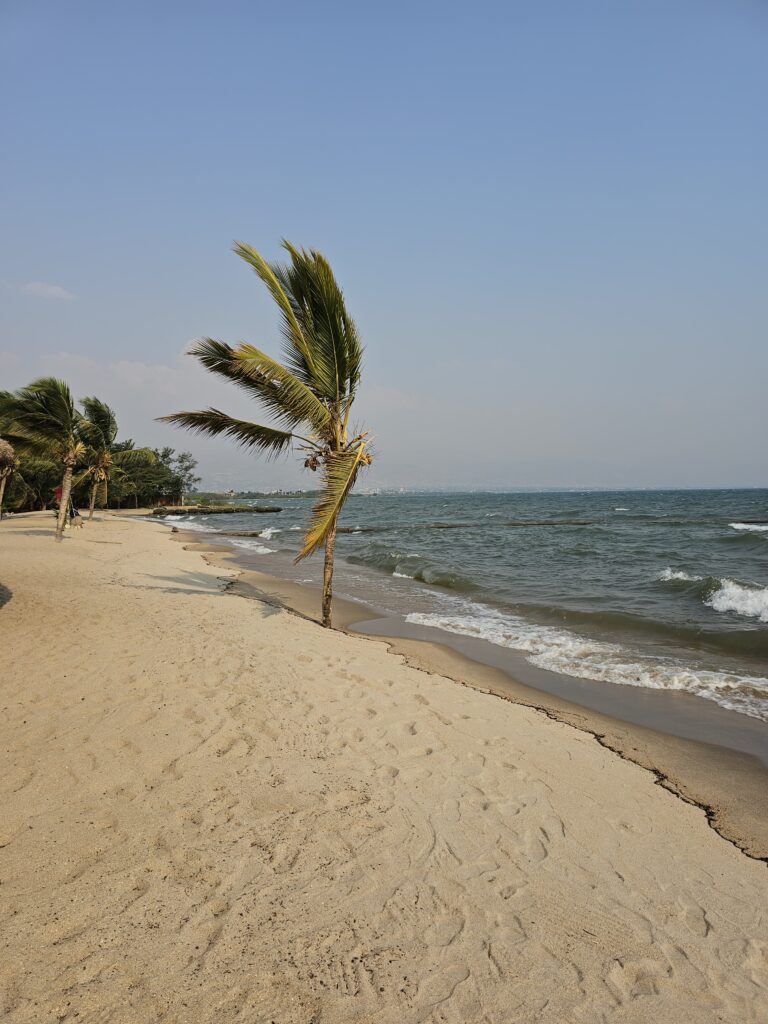
This was probably the reason why an armed security guard patrolled there and a big sign pointed out the dangers posed by hippos.
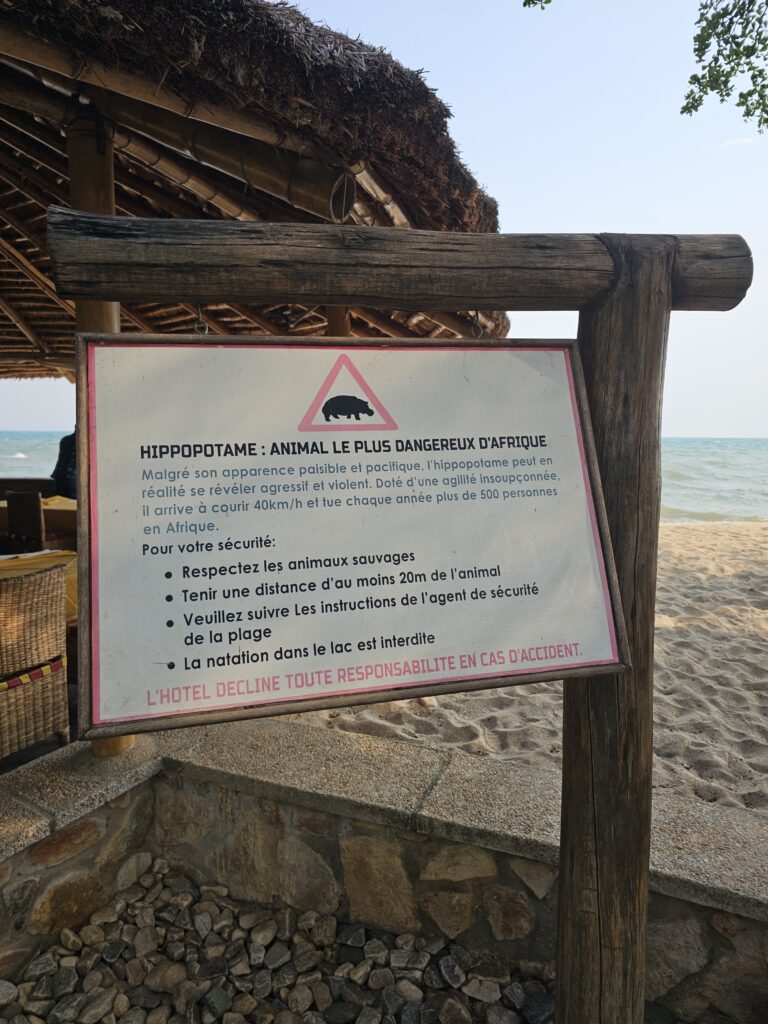
Apart from that, the hotel Club du Lac Tanganyika was a bit outdated and rather corresponded to two or maximum three stars according to western standards. The rooms were nice, but the bathroom looked like a construction site. Kati also saw a gigantic cockroach in our room. However, I don’t want to complain. I mean, who knows what the mid-range hotels in Bujumbura would have looked like.
The next morning we were picked up at 7am at the hotel by our guide Hypolite. Hypolite actually works as a farmer. With his eight cows, he makes a living selling milk. At the same time, he has about three tourists per month during the peak season with whom he takes tours.
I assume that in Burundi no guides do this job full time. There are probably too few tourists and thus it is for most guides an interesting part time job. This may also be the reason why practically all guides charge crazy prices. If a tour takes place, it should also be really worthwhile.
Our tour included three stops: the Teza tea plantations, the Kibira National Park and the drummers of Gishora. Strictly speaking, there were two stops, since the Teza tea fields is the gateway to Kibira National Park. The travel time from Bujumbura to these places and back was about five hours all told. Hypolite first suggested that we do this tour in two days, however, it is all easily doable in one day.
The drive from Bujumbura to Burundi’s countryside was a highlight. Burundi might be one of the poorest countries in the world. But as a consequence, we saw something we have not seen for a while. At least not in Europe. Children were playing on the roadside. With tyres or other things. Sitting next to the road and talking to each other and no mobiles or tablets in sight.
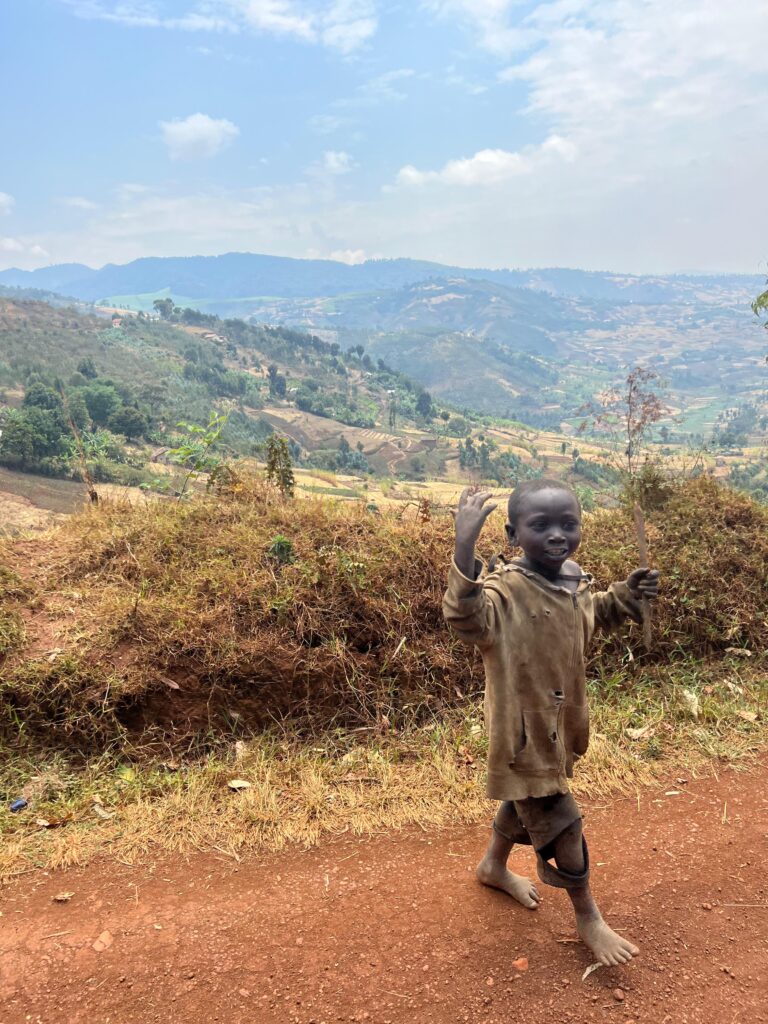
In general, we saw an enormous number of children on the roadside. A typical picture for African countries where the majority of the population is under 18 years old. The children in Burundi were very happy to see us. They greeted us with “Mzungu” (a term for white people) and asked if we had sweets for them.
On the other hand, we saw some interesting transportation methods. Most often we saw bicyclists holding on to trucks and being pulled by the vehicle. However, we also saw people climbing up trucks and holding on. It looked quite bizarre.
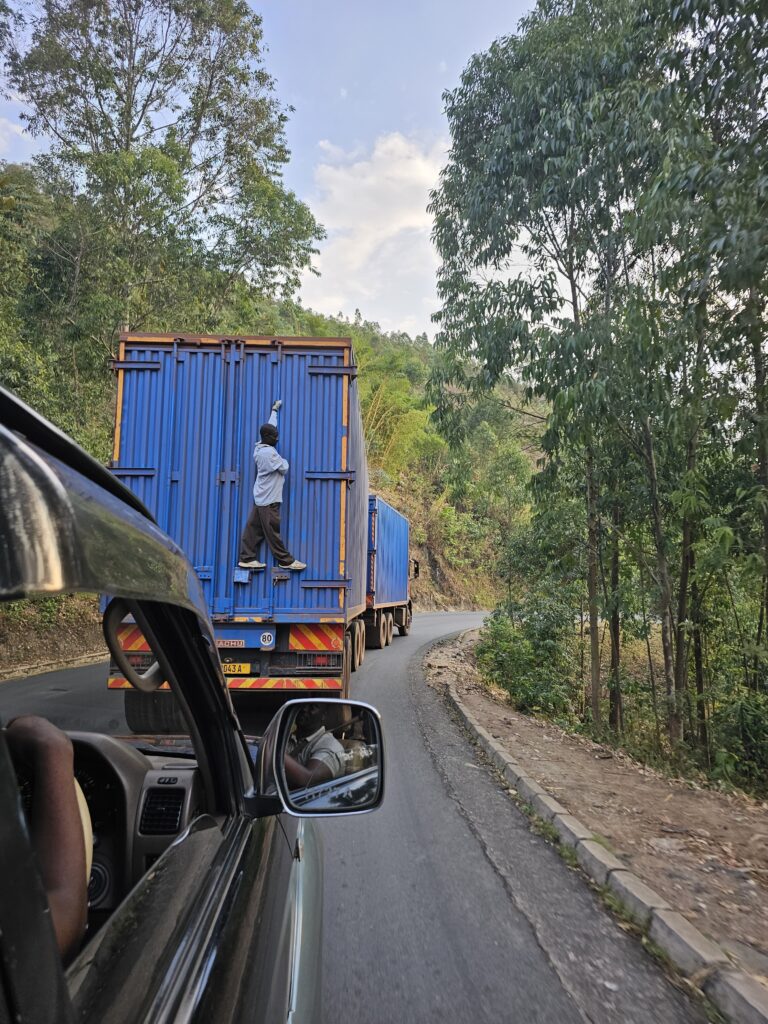
By the way, the drive from Bujumbura to Teza is good to get a comprehensive impression of Burundi’s nature. The landscapes look very similar to those in Rwanda: green-brown hills, tea fields, forest, plus a somewhat mystical fog in the air. I came to the conclusion that Burundi is a beautiful country.
Arriving at the Teza tea fields, we got a guide who told us something about the tea fields and emphasized again and again that the tea from Burundi has one of the best qualities in the world. Even Queen Elizabeth was supposedly a big fan of the black tea from Burundi. I am not a tea fan. However, the views you get at the Teza tea fields are beautiful. Probably one of the most scenic spots in the whole country.
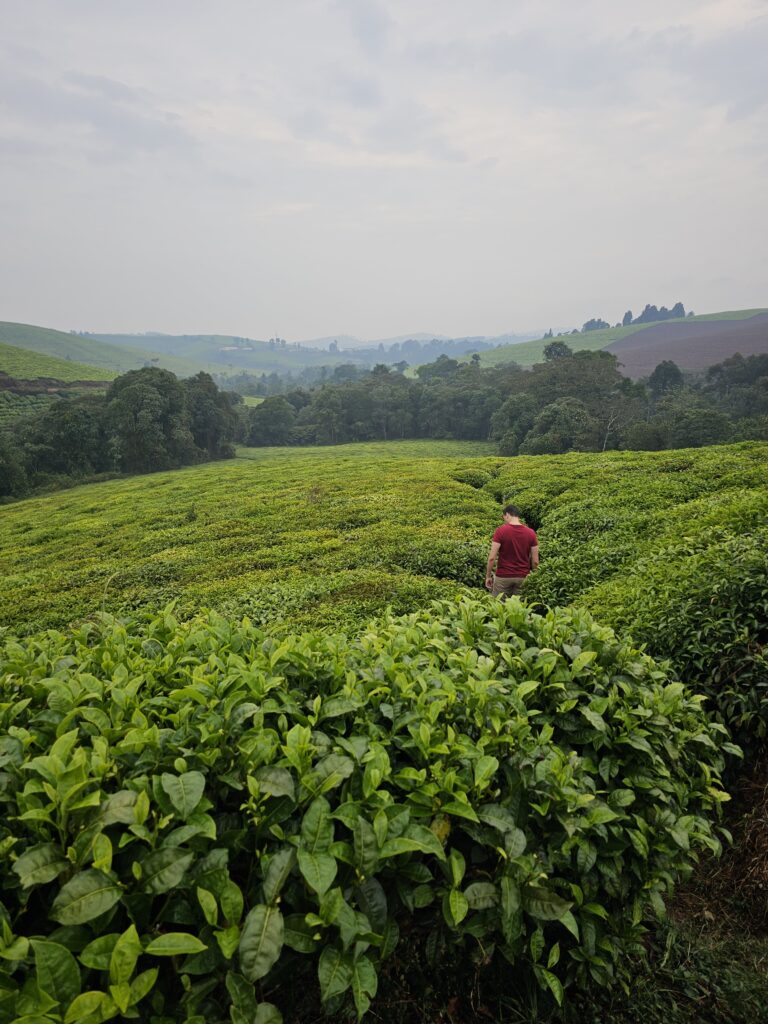
From the tea fields, the guide led us to the national park, where we took a two-hour hike (more like a walk). The forest itself I found not particularly interesting. However, if you are lucky, you can see chimpanzees in it.
You can also book a chimpanzee trekking. Just like in Rwanda or Uganda. The only difference is that in Burundi you have no guarantee that you will see the primates. It is a pure matter of luck. And as I understood the guide, the chances are rather less than 50% that you will see the monkeys. I don’t think I would pay a significant amount for such a tour. Would you?
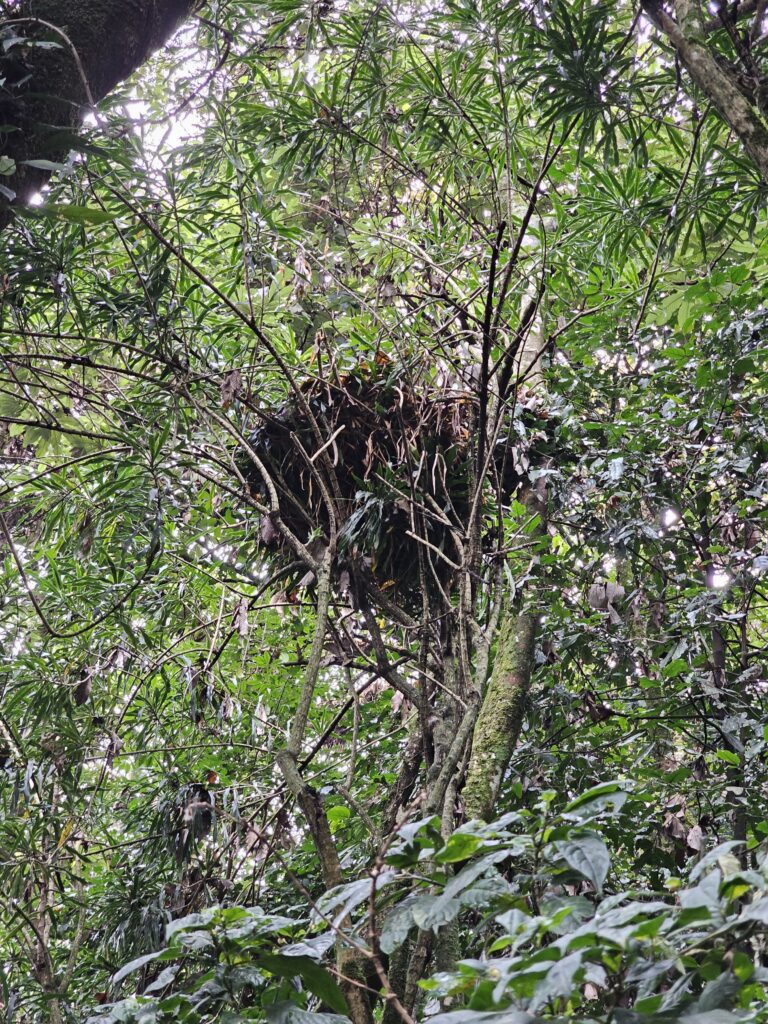
Was Kibira National Park worth the visit? In combination with the Teza tea fields yes, otherwise the forest is one that exists a thousand times in the world. Still, it is a good filler on a day-tour and since our guide was enthusiastic about the forest, I do not want to badmouth it. So if you are visiting Teza anyway, add the national park to your itinerary as well.
The afternoon program was a visit to the Burundi Drummers, probably one of the biggest tourist attractions in the country. After a short lunch stop in the new capital Gitega, we drove to Gishora, about ten minutes away, where the Drummers put on their show.
I have often seen pictures of these drummers online and have always wondered why this would be a big deal. According to my own experience, such cultural shows are at best a bit comical, and at worst (and this seems to be the case most of the time) pretty boring. However, people who have seen this show have always told me how cool it is. That’s why I ended up wanting to see it.
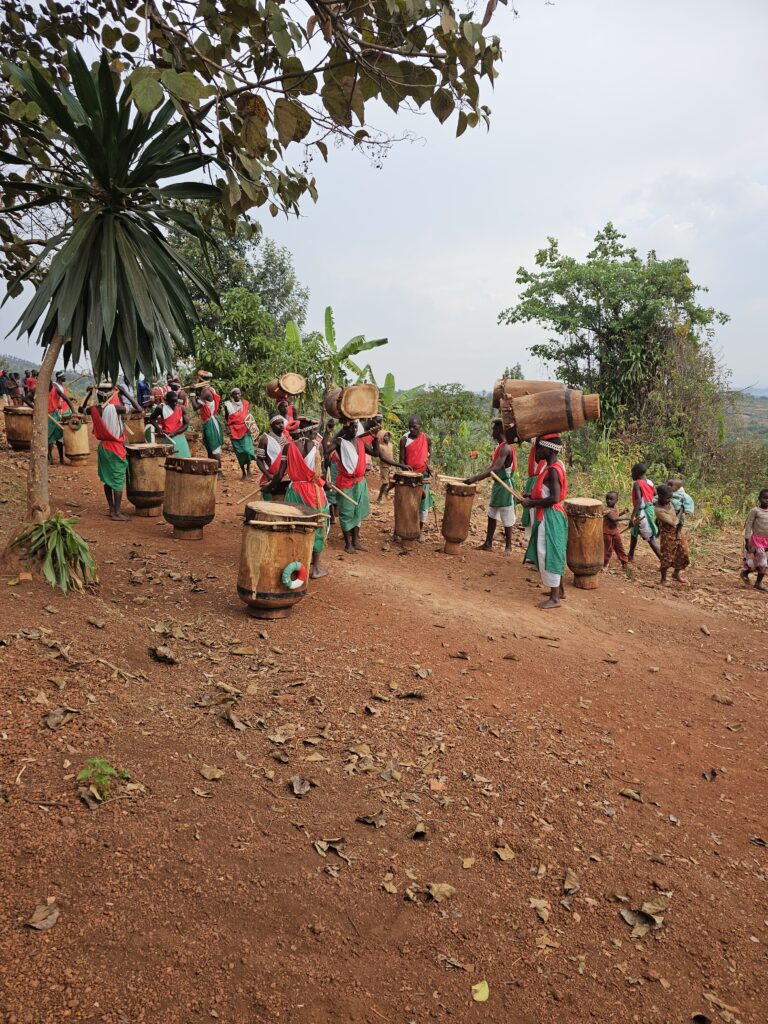
The show was just a private show for us. I don’t know how much it cost, but Hypolite included it in the tour price. The show lasted about an hour. What can I say? It was absolutely great! And trust me, if the show would have been crappy, I would write it here.
As I said, I’m not usually one to find such cultural dances particularly interesting. However, I was very impressed by the drummers of Gishora. The show was superb, really entertaining and is definitely a highlight that you should not miss when traveling to Burundi. A clear recommendation!
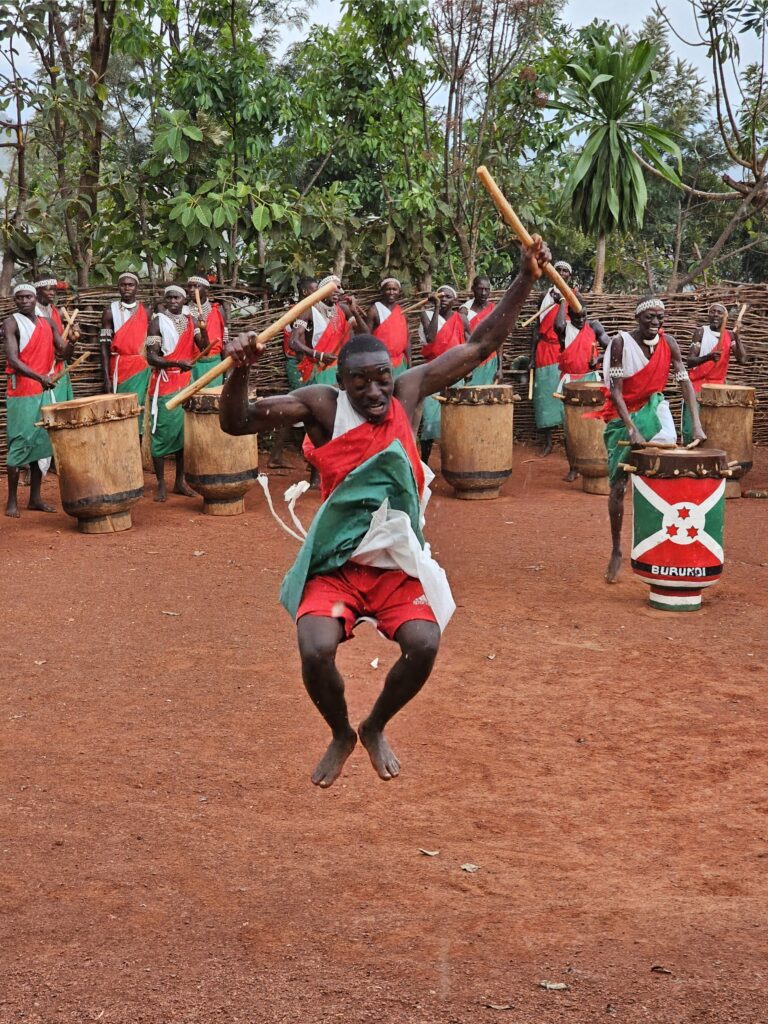
We returned to Bujumbura shortly before sunset. It was a great day-trip to be honest and if you’re ever in Burundi, do not hesitate to contact Hypolite (Whatsapp: +25771693815). He turned out to be a great guy and I can definitely recommend him.
There would have been other places I would have liked to see in Burundi. For example Karera Falls or the Failles des Allemands in the south of the country. However, I would have found it excessive to book a second tour given the high prices. After all, the places I was interested in, offered nothing that I had not already seen somewhere else. So in the end it was an economical decision to book only one tour.
Originally, I planned to spend the last day of departure in Bujumbura. Before our day trip we made a short stop in the former capital and it didn’t look very interesting. I also saw an enormously high number of soldiers and policemen, probably the highest number I have ever seen anywhere. Since I heard before that tourists got in trouble for taking pictures in Bujumbura, this was another argument against going to the city again.
So we spent the last day again at Club du Lac, where we could watch some hippos in the water from the lakeshore. Hypolite recommended us to make a boat trip in the Rusizi National Park, right next to our hotel. Also there we felt the price of 120 USD for riding in a boat was crazy. After all, we would see enough hippos and crocodiles in Uganda in the days after.
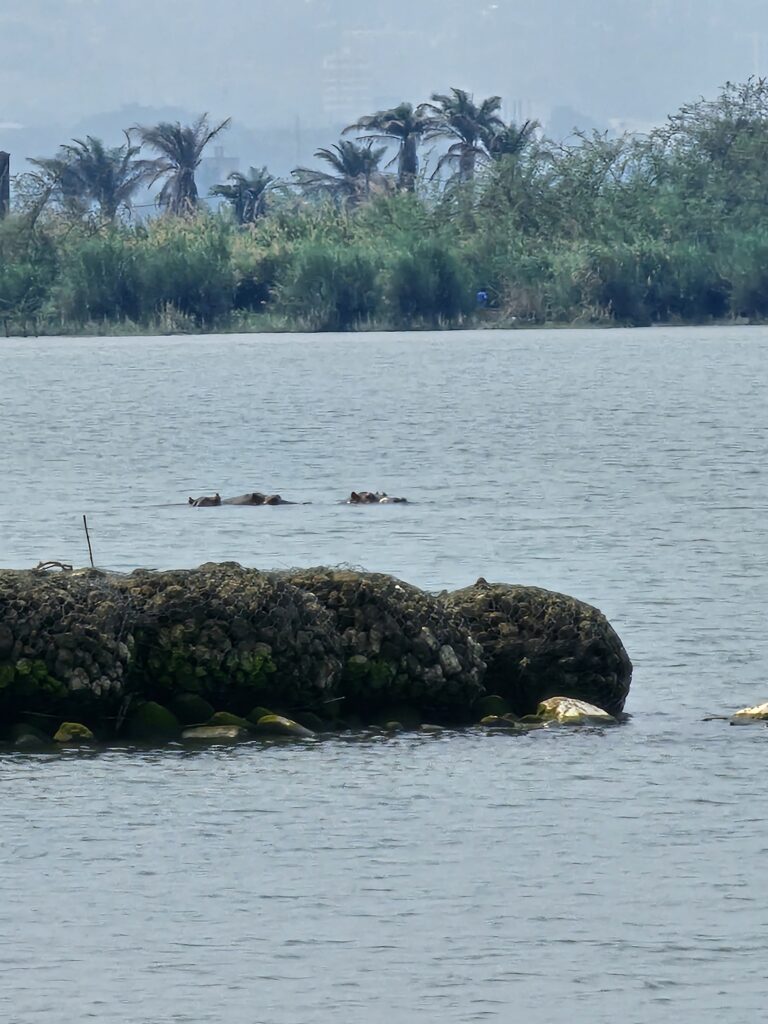
Our two days in Burundi were thus over. I had really low expectations for Burundi and they were definitely exceeded. Burundi is a small, beautiful country with nice locals, stunning landscapes and the one or other tourist attraction to see. To Hypolite it was important that we tell at home (or best online) about the fact that Burundi is now safe. And it really is. The travel warnings are not accurate anymore and the country wants to welcome tourists again.
Is it worth traveling to Burundi? This is where it gets a little tricky, because Burundi is almost a clone of Rwanda to me. Rwanda, however, has unfortunately (for Burundi) the better attractions to offer in addition to equivalent nature: Gorilla trekking, the Akagera National Park, the tragic Genocide Memorial in Kigali, and the chimpanzee trekking where, unlike Burundi, you are guaranteed to see the apes.
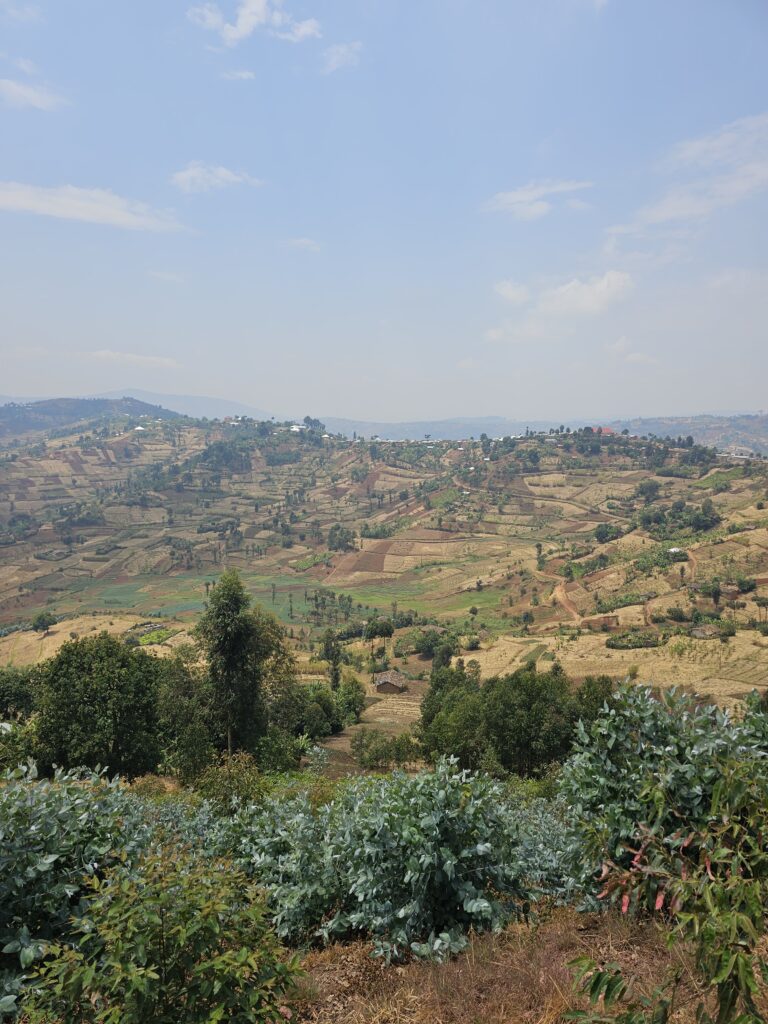
At the same time, there are more and better air connections to Rwanda and apart from gorilla trekking, Rwanda also has more tourist-friendly prices. While in Burundi you would probably see all the highlights in two or three days, in Rwanda you would definitely need longer. Thus, it is quite difficult for me to find any arguments in favor of Burundi when you have a “better” country right next door.
For this reason, Burundi is and will probably remain more a country for hardcore travelers who want to vacation in a country that sees virtually no tourists. But those who make it here and leave Bujumbura will have some nice days in Burundi.
Click here to find the trip reports of the 180+ other countries I have visited so far!
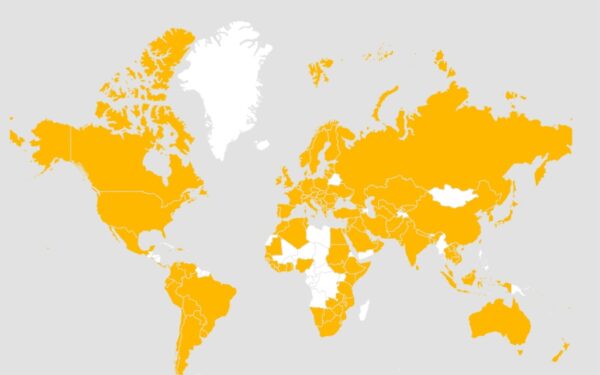
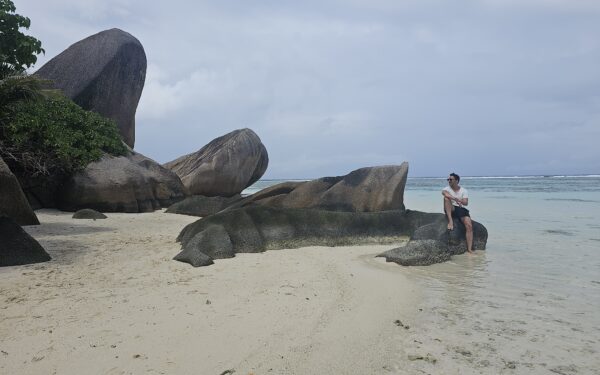
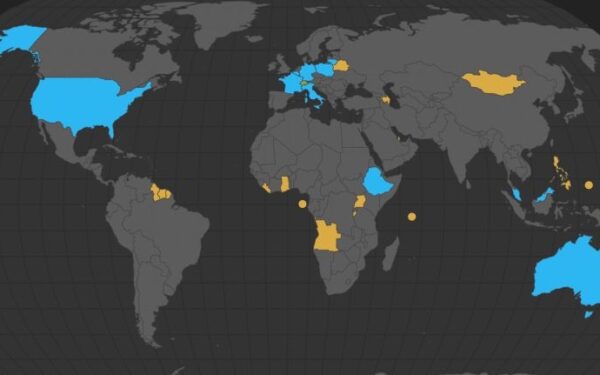
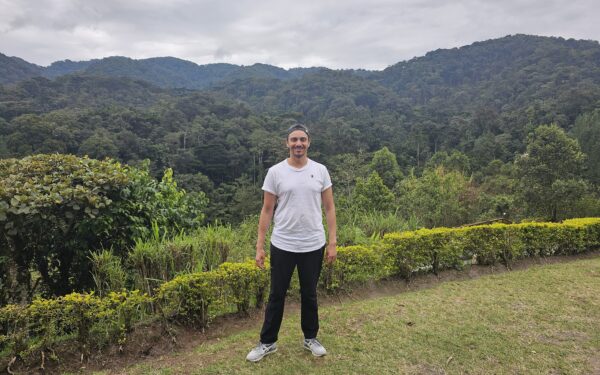
Hello Nicolai
Really enjoy your blog and writing style. Your brief historical synopsis is usually spot on but you have a major error in paragraph 2.
Burundi has a history of multiple genocides arising from Hutu Tutsi rivalries and is intimately tied to the Rwandan genocide. A better summary might be that Burundi’s tragic history never rose to the attention of the world like that of its neighbor Rwanda.
Hi Frank, wow – I wasn’t aware of that! Thank you, I’ll change it in my article. Cheers, Nicolai
You’re welcome!
Happy travels!